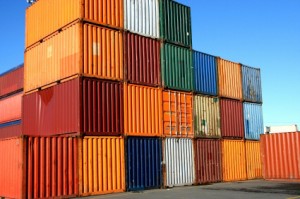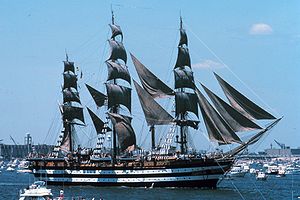On a recent overseas flight I sat next to a guy who works as a Silicon Valley venture capitalist. After creating and selling off a few successful internet companies he turned his efforts to investing in internet startups. He essentially now decides what the future of the internet will be. The man truly exists in the future, constantly searching for innovation in all forms. Eventually the conversation turned toward my profession. As I explained modern shipping to him it struck me how mired our industry is in methods and ideas that have  remained stagnant for more than a hundred years. How strange it was to describe to a man of the future the details of an industry that harkens the past in almost every way.
remained stagnant for more than a hundred years. How strange it was to describe to a man of the future the details of an industry that harkens the past in almost every way.
The maritime industry is much the same now as it was 100 years ago and there is probably nothing much changing any time soon. When you get right to it, a ship still moves through the water using a propeller that is attached to a shaft that turns because of the combustion engine it is connected to. Financial matters are perhaps more sophisticated than they were a century ago. But ultimately one party pays another to carry their goods on a ship, with everyone in between taking their respective commissions.
Arguably the greatest recent innovation was containerization, making the transport of goods more efficient. Prior to that perhaps it was mechanical propulsion. We are an industry that changes gradually and obstinately. As an example, at present the International Maritime Organization is entertaining a debate over the navigation of ocean vessels using coastal vessel traffic services, much in the way airliners operate. In this case, the slow pace of change is a great benefit. As a ship captain I would have a difficult time surrendering my decision-making capability to someone in a cubicle stationed on the coast of Tanzania. There are a host of legal implications to consider should an accident occur. And I am not alone in these concerns. This is why shipping innovation moves so slowly. Changes affect many nations and since the maritime market is a mature one it is difficult to change the momentum of the status quo.
The Silicon Valley guy wanted to know why ships do not use sails or some more energy efficient form of propulsion. I explained that while ship engines have become more efficient and are adopting new, more refined fuel types, the basic concept remains the same because it works. We are beginning to see alternative propulsion methods but nothing has been yet proven effective enough to be adopted full scale.
The latest dream is liquefied natural gas (LNG). Orders are currently being placed all over the world for LNG tankers and ships that operate propulsion using LNG. It is the cleaner, cheaper fuel of the future. There appears to be an LNG boom developing in the United States and all over the world companies are striving to be part of it. It will be interesting to see what lasting changes and improvements come to shipping because of it.
Innovation in the maritime industry is slow. At the end of the day shipping will remain the same as it has been; giant hunks of steel owned by the wealthiest families on earth plying the oceans carrying boxes full of the goods that people need. Freight rates rise and fall. Shipping companies come and go. But little changes. And when iPhones and Facebook are relegated to the history books ships will still be out there running, propellers turning, carrying goods from place to place. So far there is no app for that.
